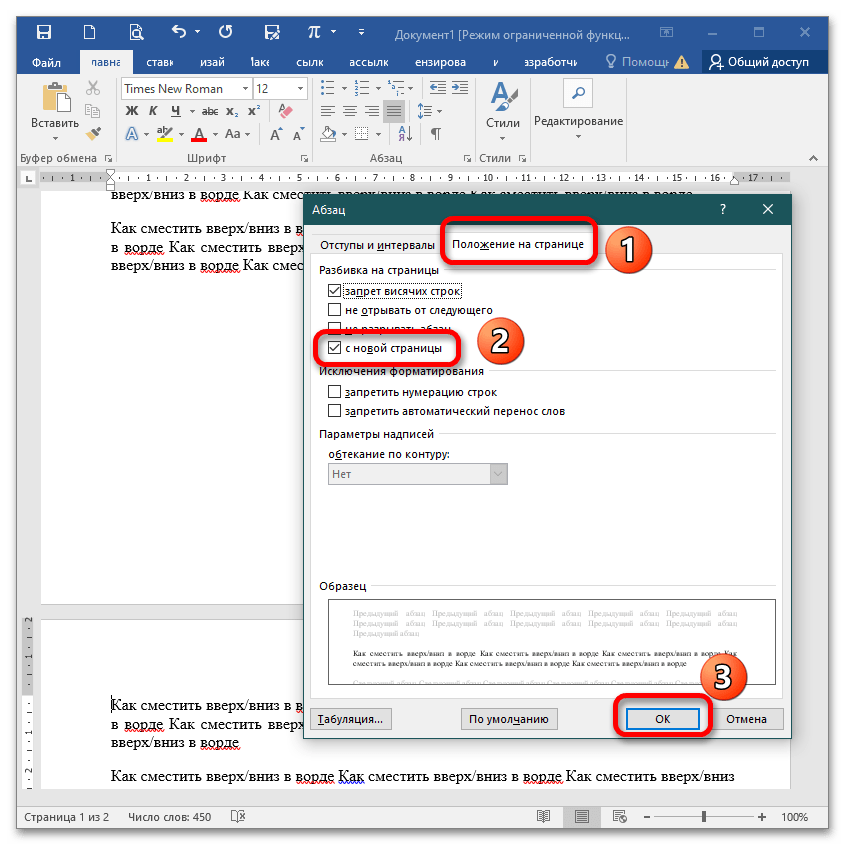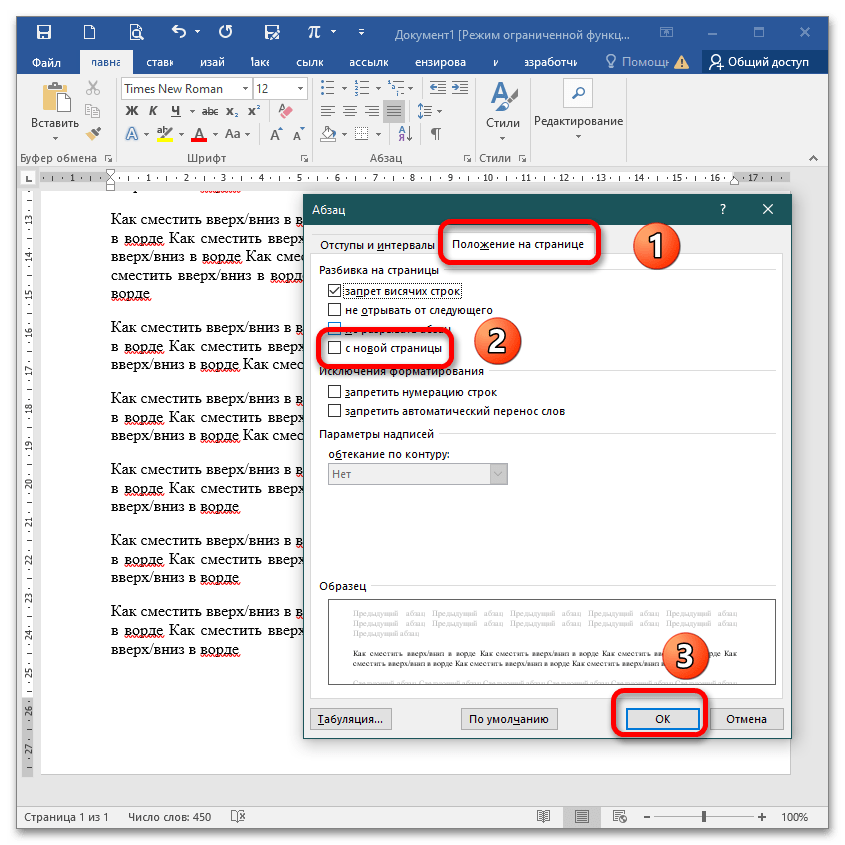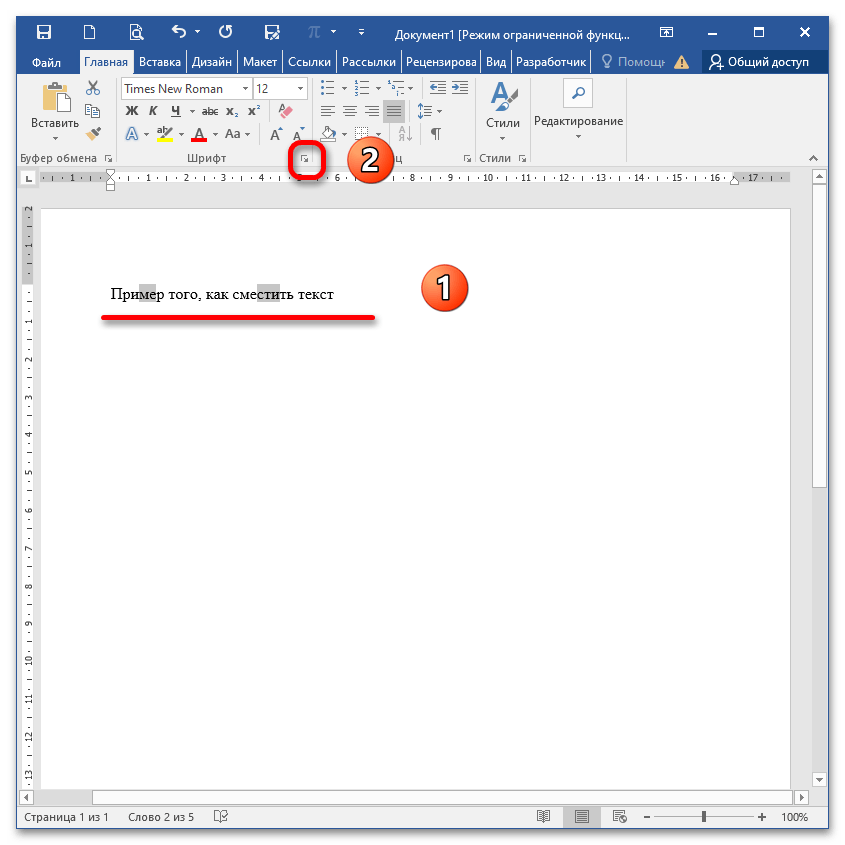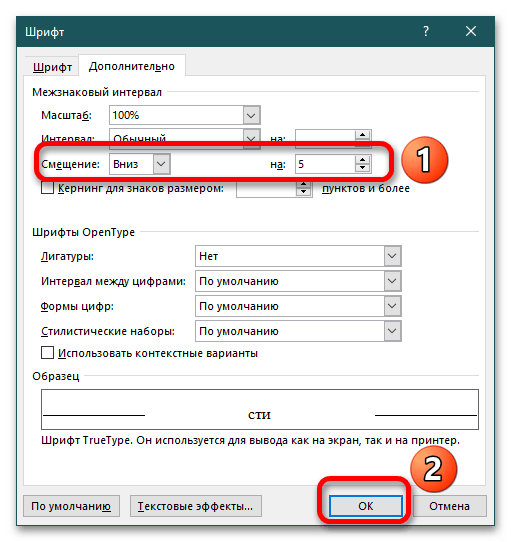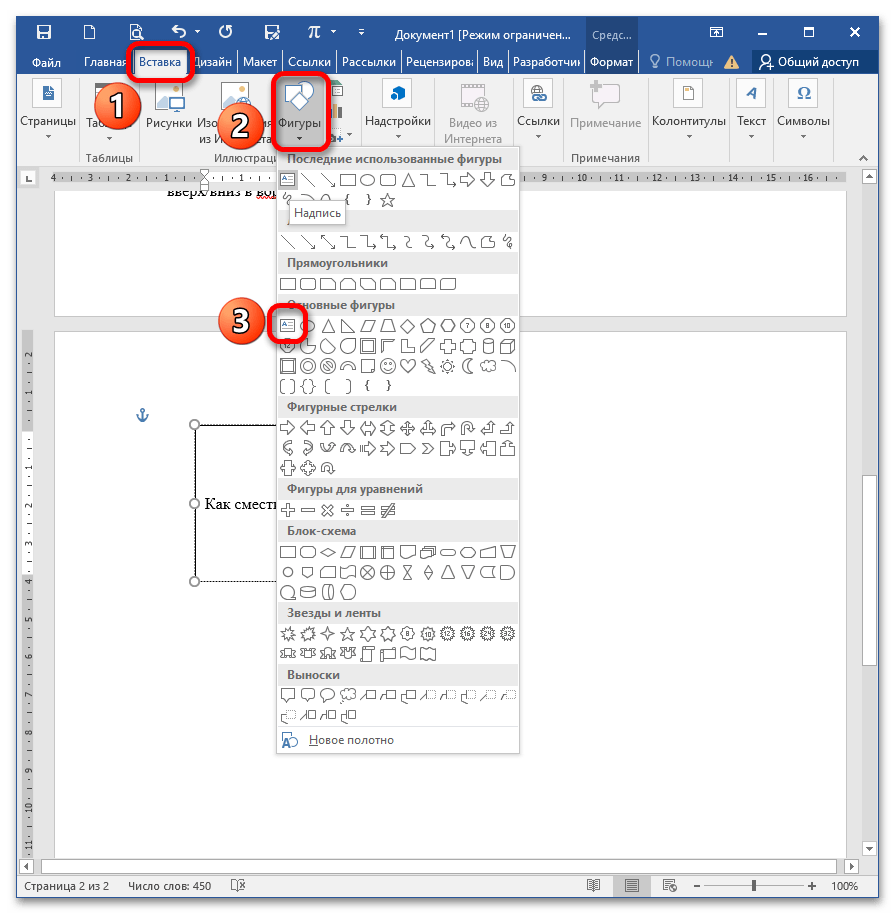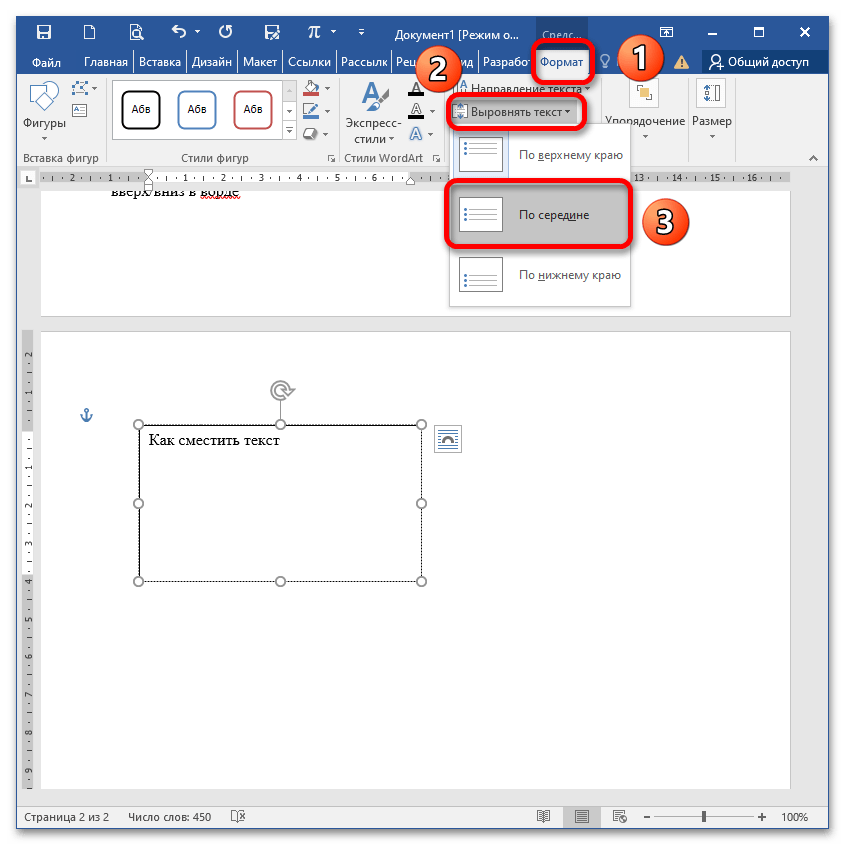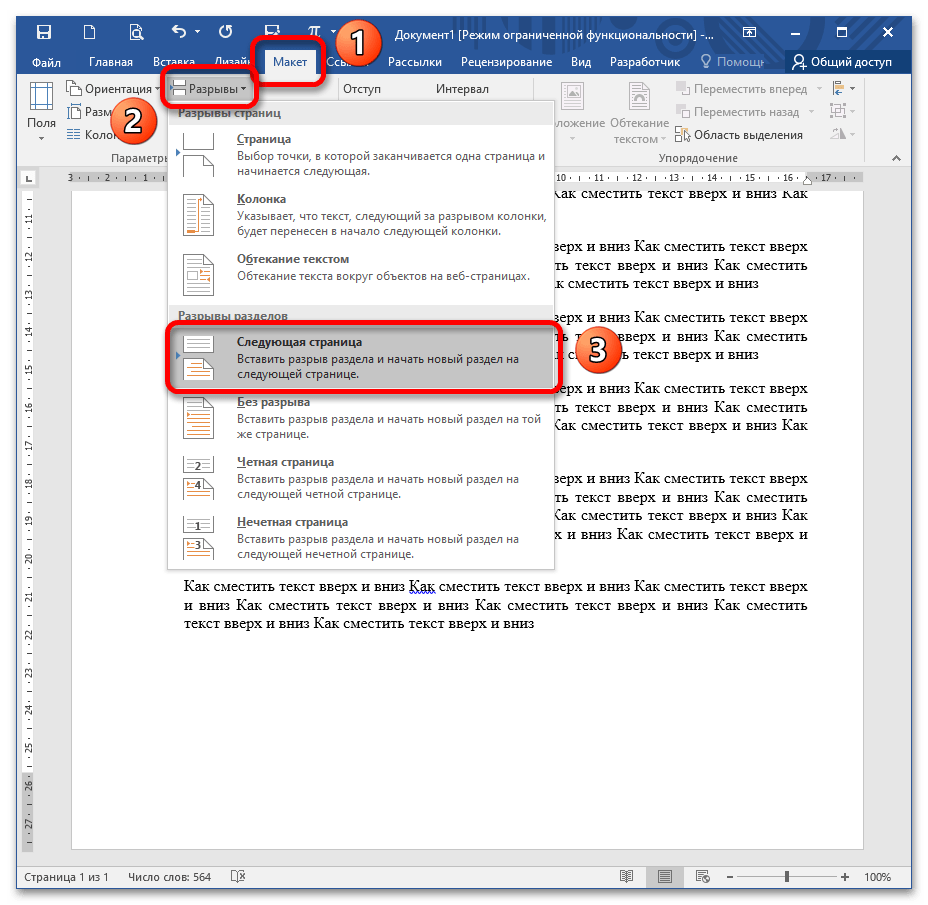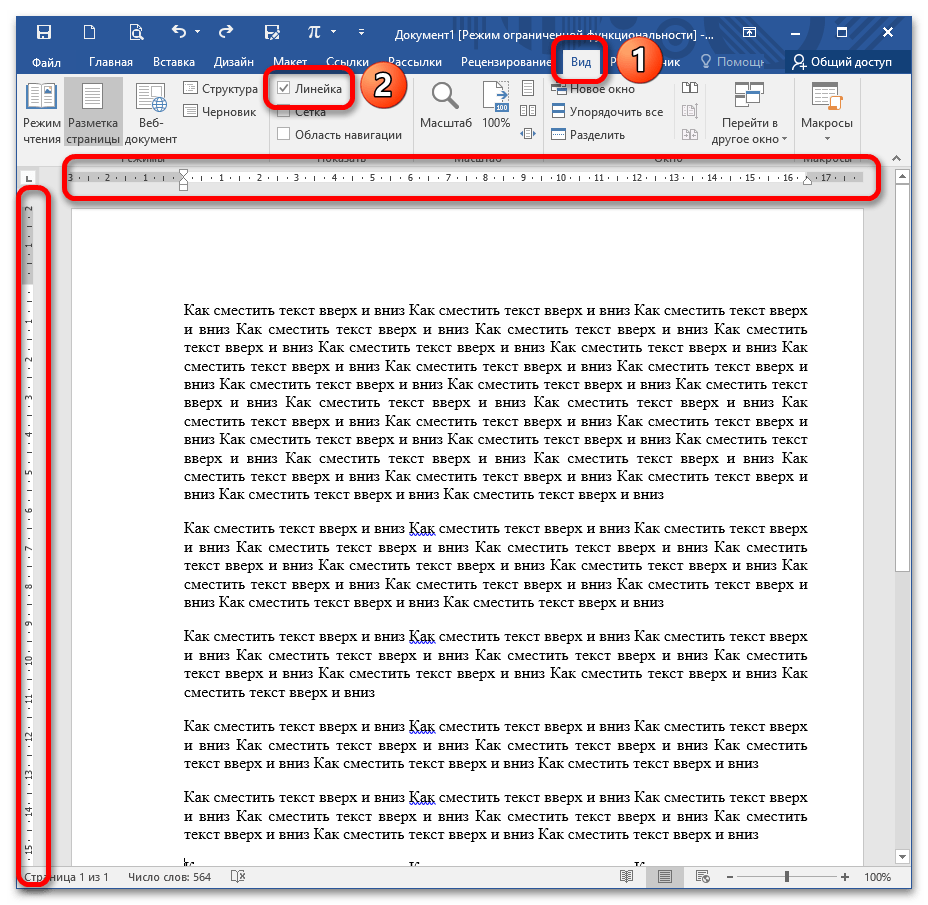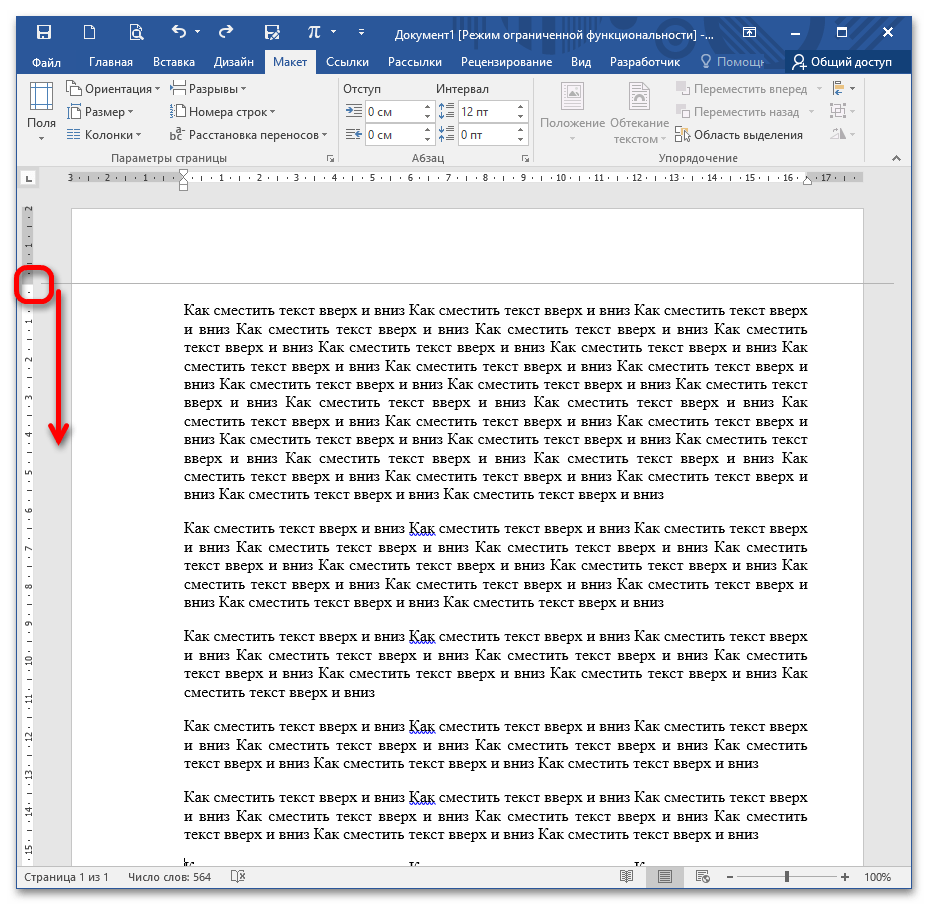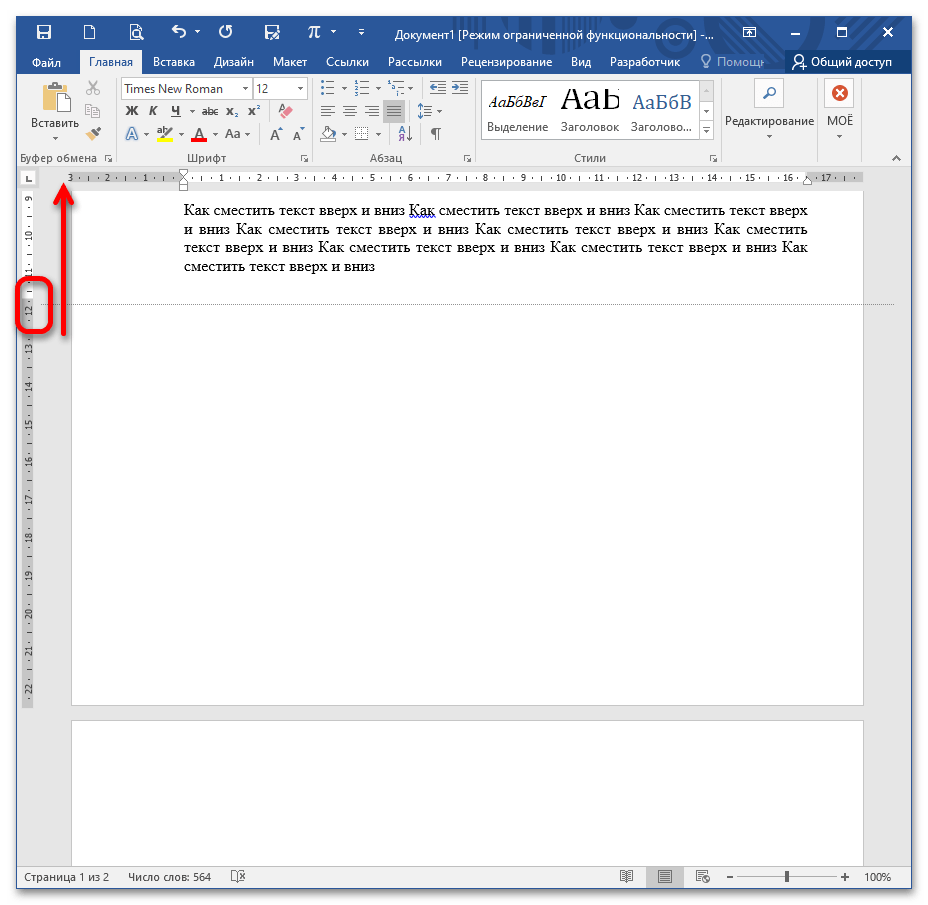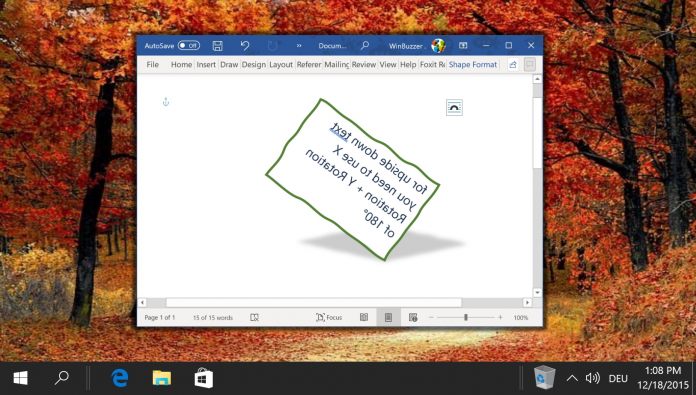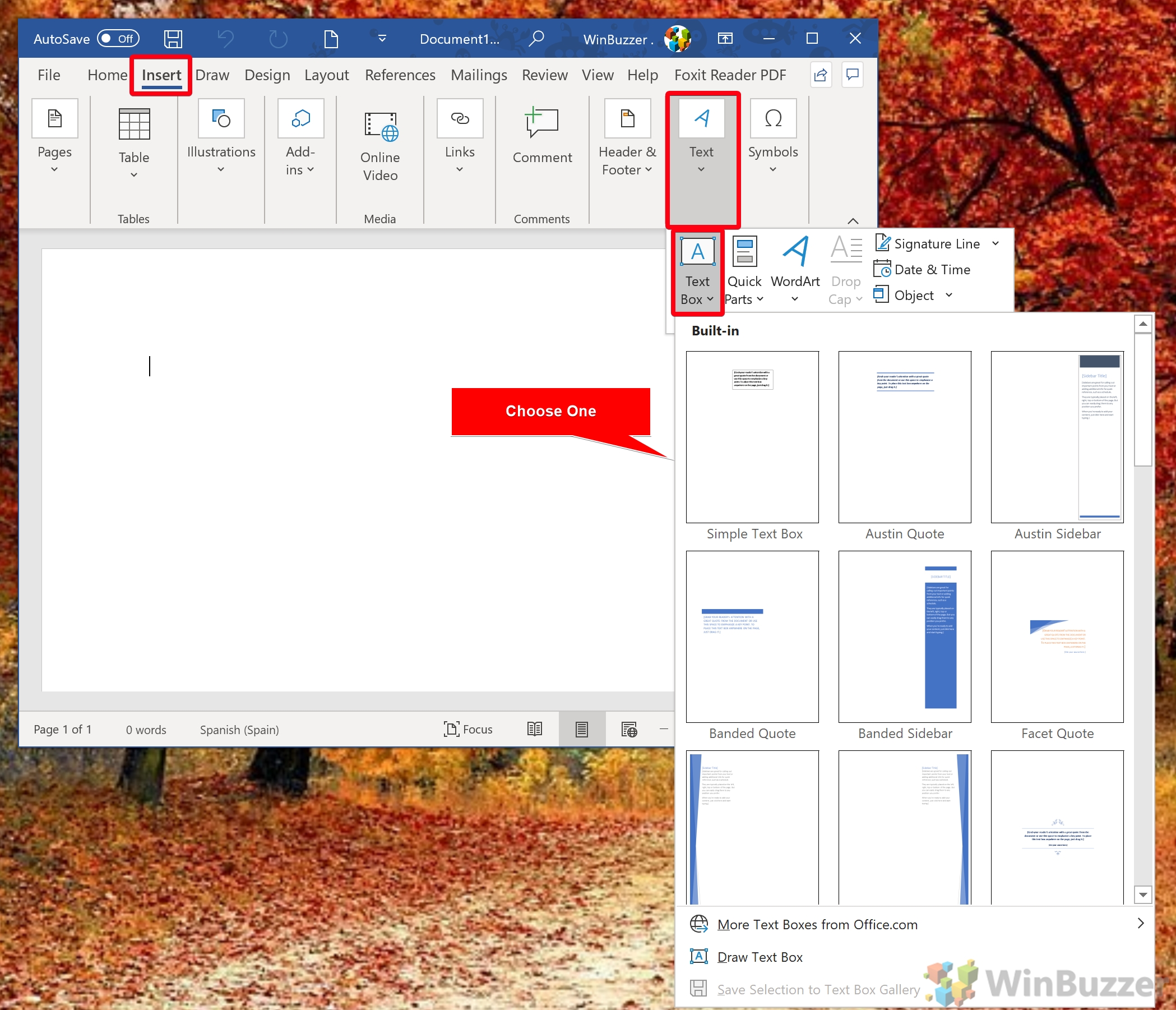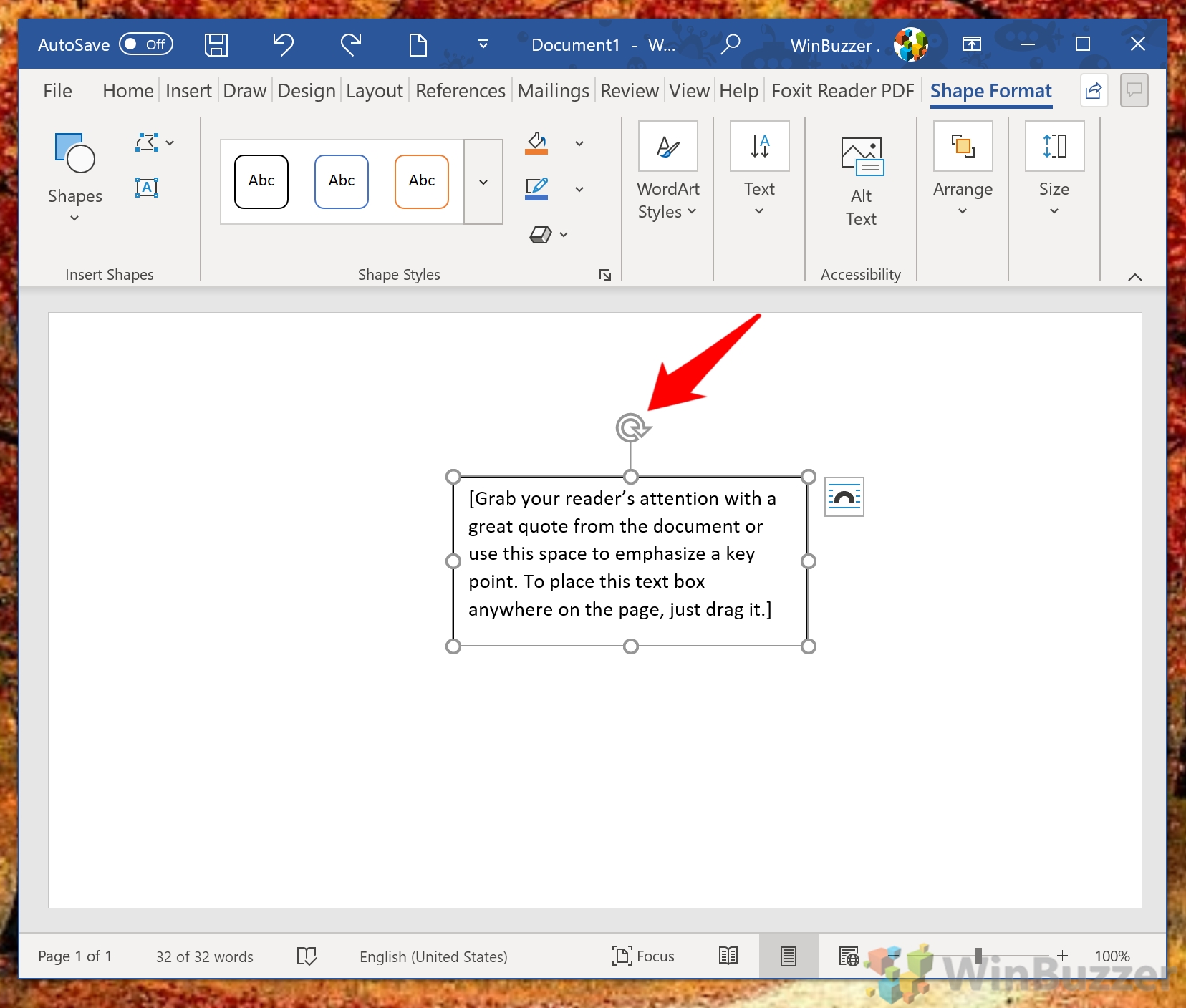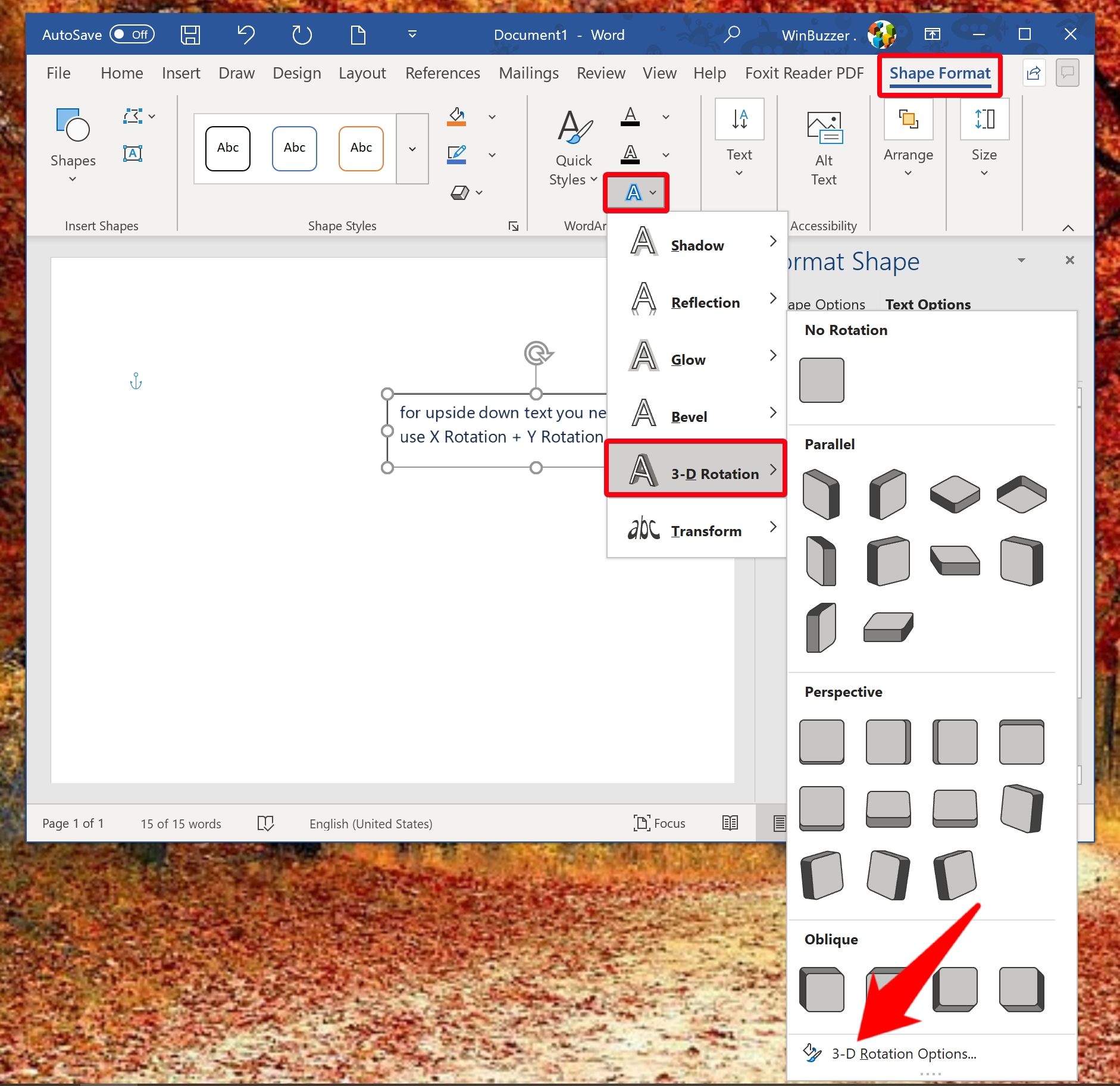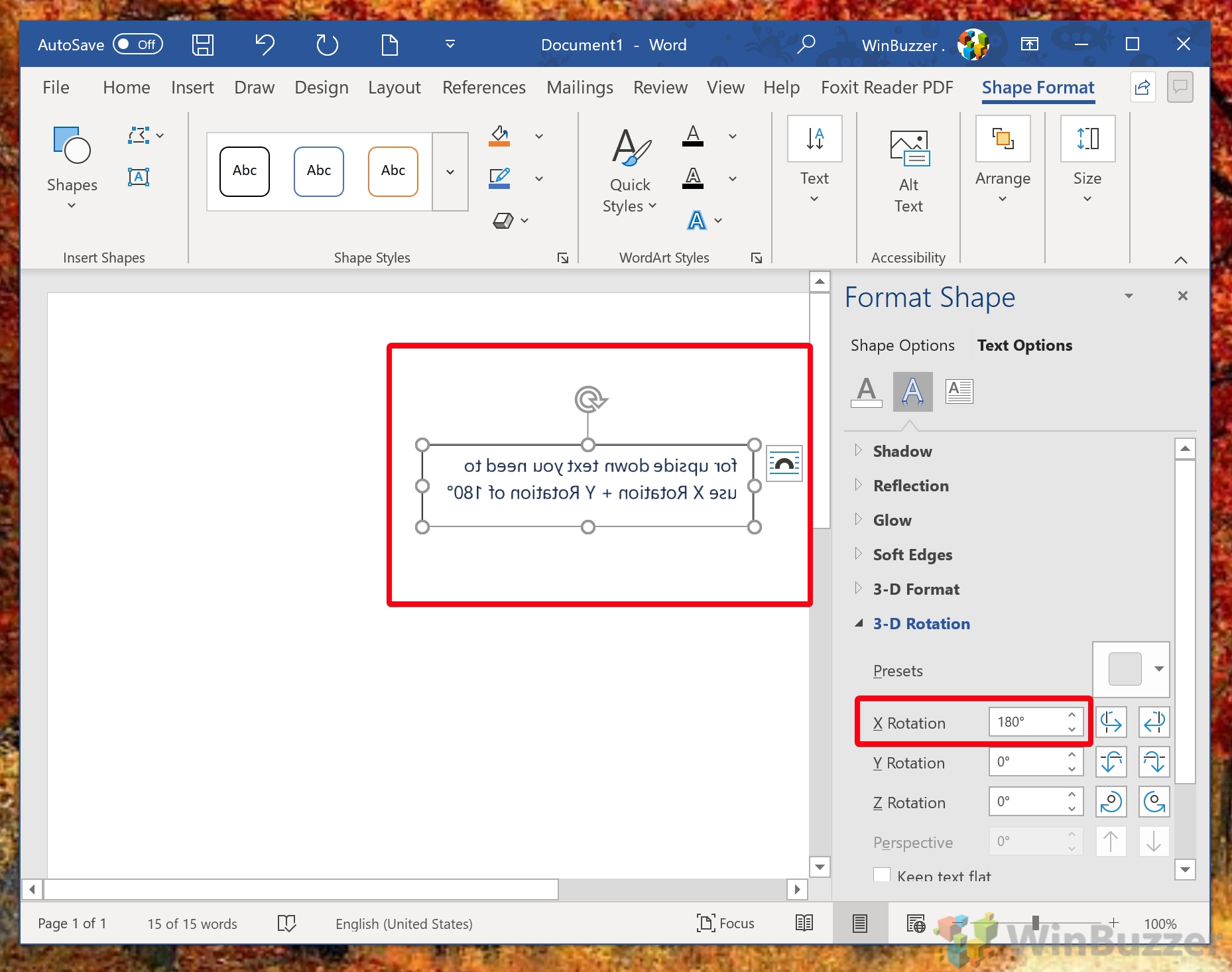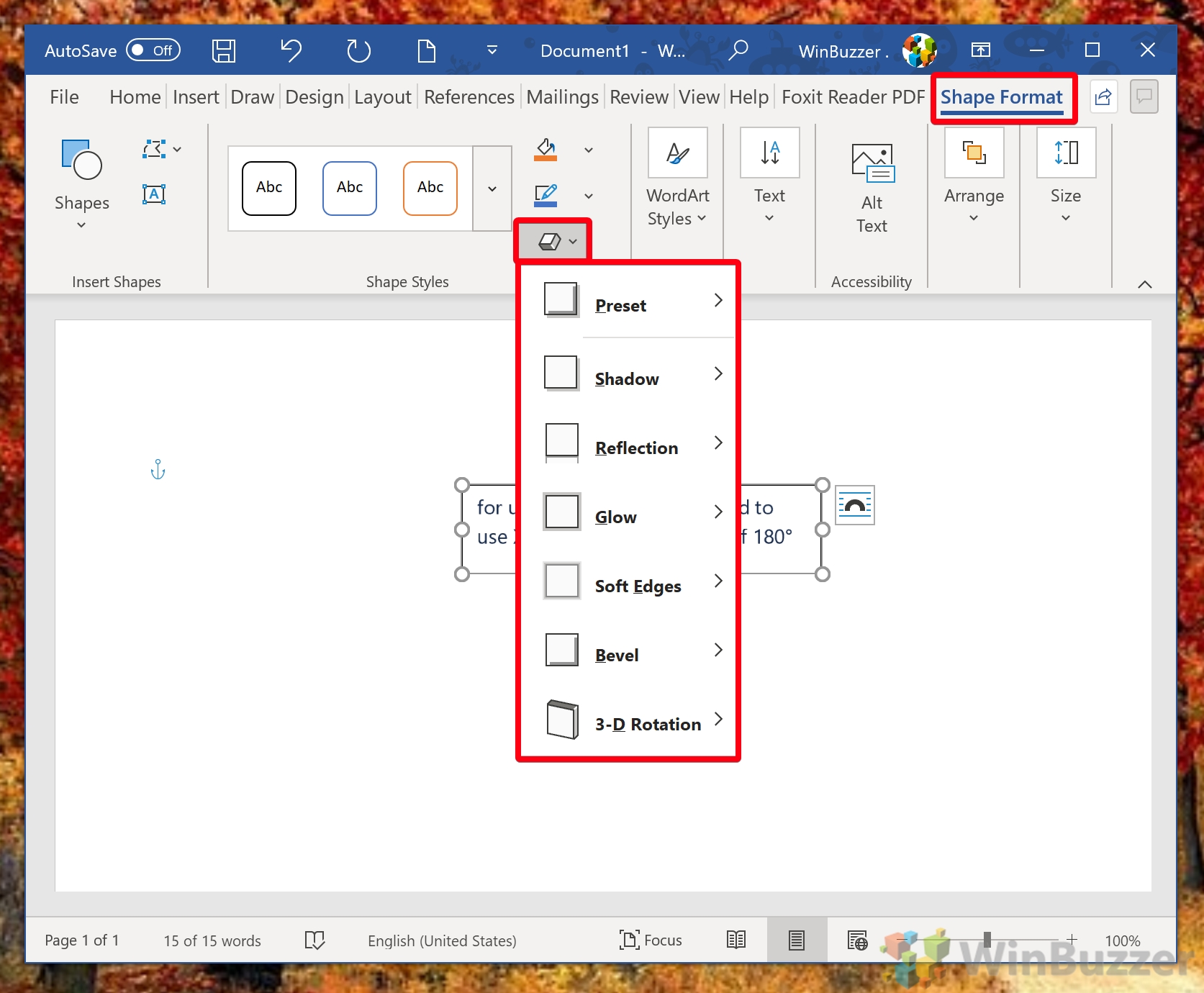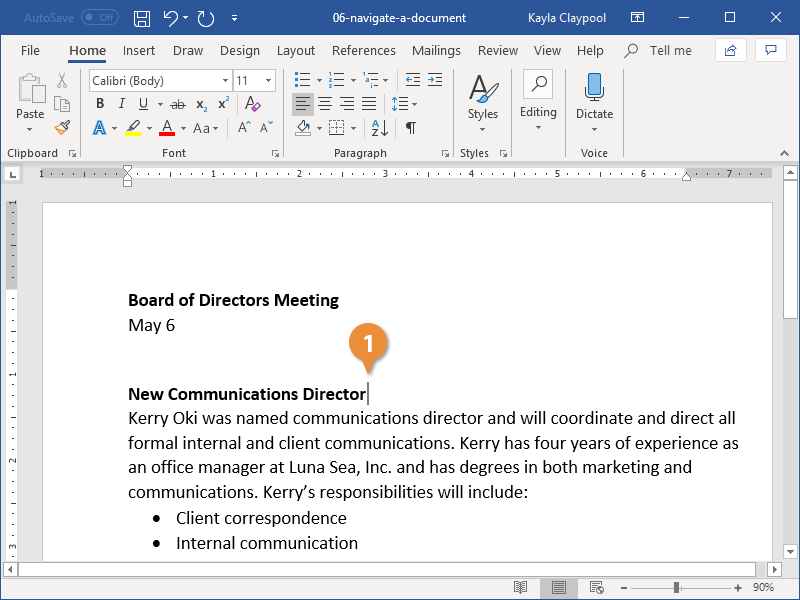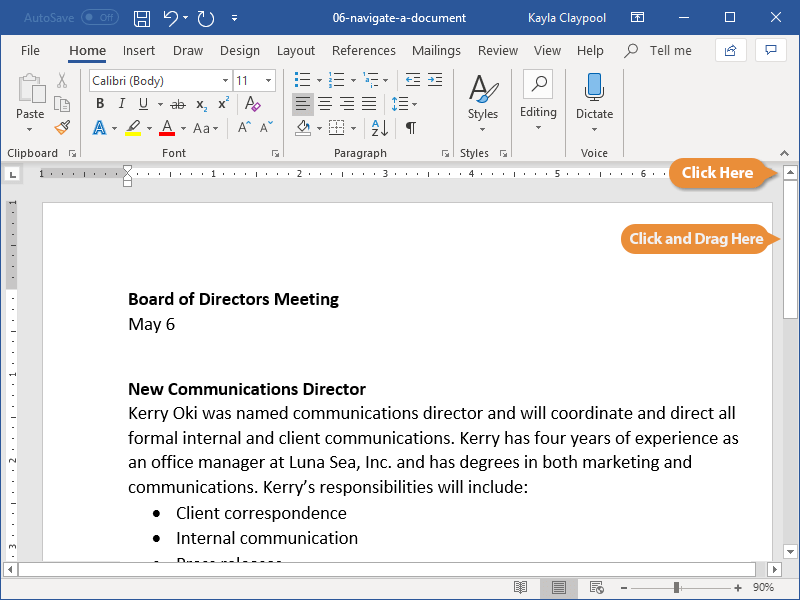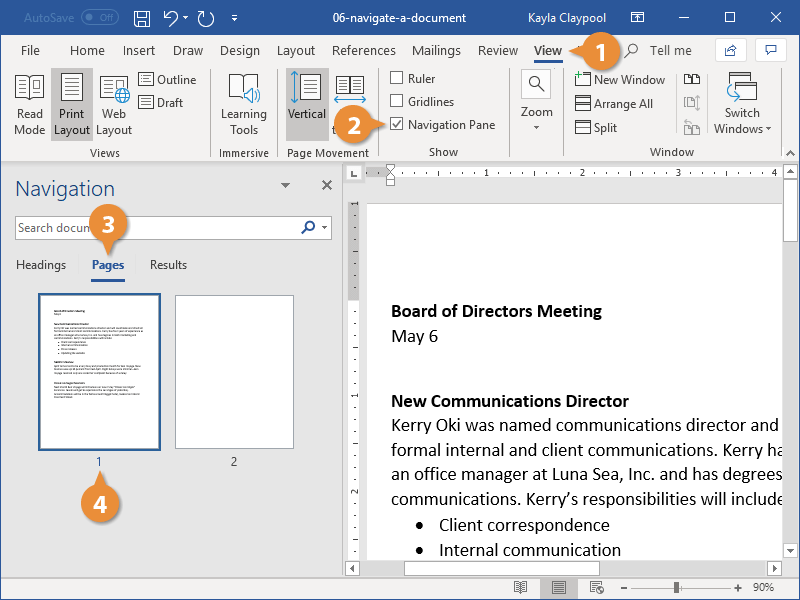Содержание
- Вариант 1: Текст
- Вариант 2: Отдельные буквы
- Вариант 3: Подстрочный и надстрочный знак
- Вариант 4: Надпись
- Вариант 5: Разрывы
- Вариант 6: Боковая линейка
- Вопросы и ответы
Вариант 1: Текст
Если в MS Word необходимо сместить текст с заданной периодичностью, используйте отступы в окне «Абзац». Для смещения вверх/вниз применяют категорию «Интервал перед/после», устанавливая стандартные значения 6 или 12 пт. Для лучшего отображения текста поэкспериментируйте с величинами.
Подробнее: Настройка абзацных отступов в Microsoft Word
Если нужно сместить фрагмент на новую страницу, установите курсор перед его началом и вызовите окно «Абзац». На вкладке «Положение на странице» установите переключатель «С новой страницы», щелкните «ОК». После закрытия окна фрагмент съедет вниз и начнется на новом листе.
Если открыть это же окно, убрать галочку с опции «С новой страницы» и подтвердить действие, текст автоматически поднимется и встанет на свое место.
Вариант 2: Отдельные буквы
Чтобы сместить несколько букв относительно заданной плоскости:
- Напишите текст или откройте документ и выберите те элементы, которые будут редактироваться. Перейдите в меню «Шрифт», кликнув на стрелку на панели инструментов.
- При открытии диалогового окна раскройте вкладку «Дополнительно» и в поле «Смещение» в выпадающем списке выберите «Вверх» или «Вниз». В рядом стоящем поле «на» укажите количество пунктов, на которые выделенный фрагмент сдвинется.
- После нажатия на «ОК» буквы «сползут» вниз или поднимутся в верх.
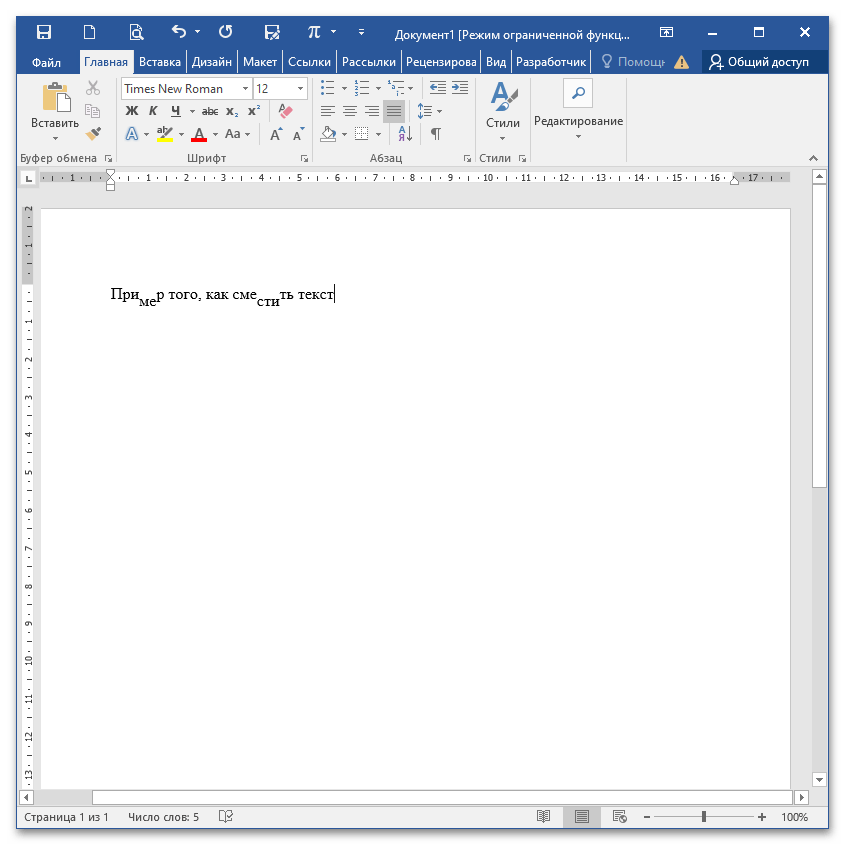
Вариант 3: Подстрочный и надстрочный знак
Выделите фрагмент, подлежащий редактированию. На панели инструментов есть две рядом стоящие кнопки, которые располагают символы в верхнем/нижнем индексе. Нажав на них, вы преобразуете текст.
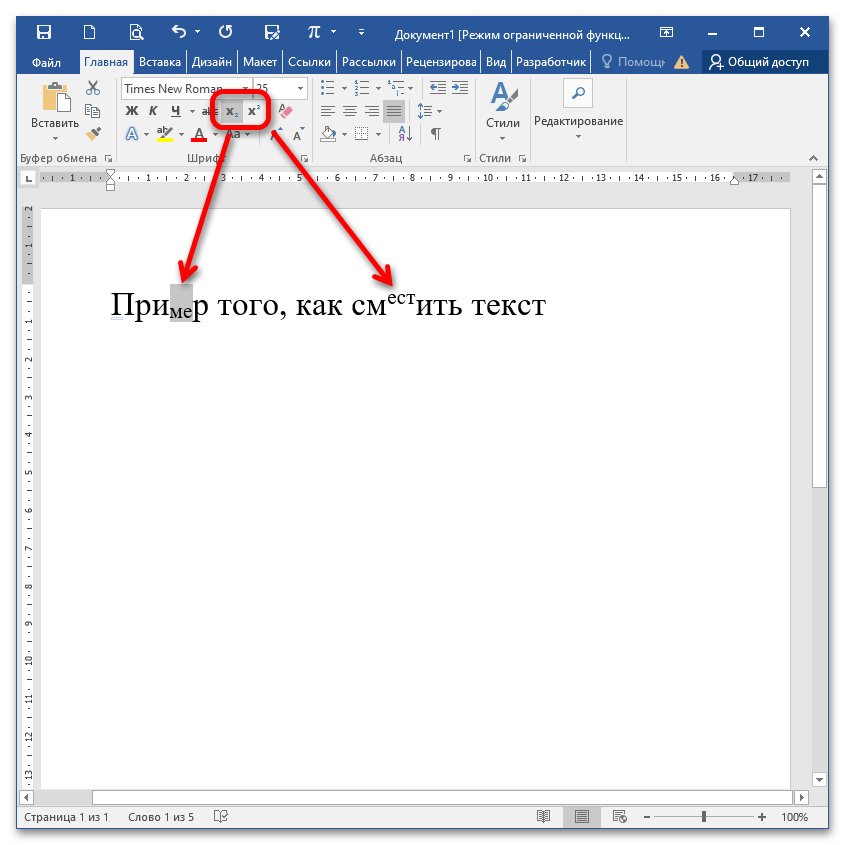
Для увеличения скорости форматирования фрагмента используйте горячие клавиши: CTRL+= (выше основной клавиатуры) для подстрочного индекса и CTRL+SHIFT+= – для надстрочного.
Подробнее: Ввод надстрочного и подстрочного индекса в Microsoft Word
Вариант 4: Надпись
При необходимости сдвига текста в надписи перейдите в меню «Вставка» – «Фигуры» – «Надпись», начертите фигуру в положенном месте и пропишите необходимый текст.
Перейдите в меню «Формат», раскройте опцию «Выровнять текст» и выберите понравившееся положение. При этом текст не нужно выделять, написанное сдвигается «в полном составе» и выравнивается «По верхнему краю», «По середине» или «По нижнему краю».
Вариант 5: Разрывы
Чтобы сместить текст вниз до начала новой страницы, можно сделать разрыв. Перейдите во вкладку «Макет» («Разметка страницы») и выберите «Разрывы» – «Со следующей страницы».
После этого вы увидите, что весь текст, расположенный за курсором «съехал» на новый лист. Если просмотреть в режиме отображения непечатных знаков (CTRL+SHIFT+8), можно увидеть, что после предыдущего абзаца отсутствуют какие-либо знаки, например, Enter.
Подробнее: Невидимые знаки форматирования в Microsoft Word
Вариант 6: Боковая линейка
Если у вас не отображается линейка, включите ее на вкладке «Вид» (установите галочку «Линейка»).
Подробнее: Включаем отображение линейки в Microsoft Word
Установите курсор в тексте, наведите мышку на границу серого и белого полей слева от текста, удерживайте кнопку мыши и потяните вниз.
Чтобы поднять текст вверх и таким образом создать особую рабочую зону, перелистните к концу страницы и, аналогично удерживая мышку, подтяните границу вверх.
При уменьшении масштаба вы заметите, что на всех листах рабочая зона находится в указанном с помощью линейки интервале.
Подробнее: Расширяем страницу в документе Microsoft Word
Самый простой способ (однако он приводит к проблемам с форматированием) – это опускать текст с помощью клавиши Enter и поднимать вверх с помощью BackSpace.
Еще статьи по данной теме:
Помогла ли Вам статья?
Download Article
An easy-to-follow guide on changing the direction of text in Microsoft Word
Download Article
- Rotating Text
- Making Text Vertical
- Mirroring Text
- Changing Paper Orientation
|
|
|
Do you want to type vertically in word? You can create vertical text by creating a textbox and adjusting its settings to set the position. You can change the text’s direction, rotate it, and mirror it. You could also change the document’s orientation from portrait to landscape mode. This wikiHow will show you how to write vertically in word on your Windows or Mac computer.
Things You Should Know
- Create a textbox with your text. Click «Shape Format» → «Text Direction» → «Rotate all text 90°».
- To make text vertical, drag the right-center circle of your textbox towards the left.
- To mirror text, right-click the textbox, then «Format Shape». Click «Effects», then input «180» into the X or Y Rotation field.
-
1
-
2
Create a textbox. To do this, click the Insert tab in the top toolbar, then click the Text Box icon in the Text section. You can select Simple Text Box from the presets.
Advertisement
-
3
Insert your text. Input the text you want to edit. You can copy and paste from another program into Microsoft Word.
- Make sure the textbox is still selected.
-
4
Click Shape Format. You can find this at the top toolbar, next to Help. Alternatively, double-click the edge of the textbox to be quickly redirected.
-
5
Click Text Direction. This will be in the Text section.
- A drop-down menu will open.
-
6
Select Rotate all text 90°. You can also select Rotate all text 270° if you want the top of the words to face the left side.
- Your text will be rotated.
- You can continue to edit your text in the textbox. The words will type in the direction set.
Advertisement
-
1
Open a project in Microsoft Word. This looks like a W on top of a blue square. Microsoft Word is available to install for Windows and Mac.
- You must have a subscription to use Office 365.
-
2
Create a textbox. To do this, click the Insert tab in the top toolbar, then click the Text Box icon in the Text section. You can select Simple Text Box from the presets.
-
3
Insert your text. Input the text you want to edit. You can copy and paste from another program into Microsoft Word.
- Make sure the textbox is still selected.
-
4
Click and drag the center circle on the right towards the left. With the textbox selected, you’ll see four circles at each point of the text box and one circle between each corner. Use the middle circle on the left side.
- As you drag the text box towards the left, it will become smaller. The text inside will adjust to fit the size of the box in vertical format.
- Make sure not to drag past the point of the left line. This could result in the words returning to their normal positions.
-
5
Remove the textbox lines (optional). If you want to remove the lines around the text, double-click the textbox to return to the Shape Format tab.
- Click Shape Outline, then select No Outline from the drop-down menu.
- The textbox lines will be hidden. Be sure to save your document if you need to return to it later.
Advertisement
-
1
Open a project in Microsoft Word. This looks like a W on top of a blue square. Microsoft Word is available to install for Windows and Mac.
- You must have a subscription to use Office 365.
-
2
Create a text box. To do this, click the Insert tab in the top toolbar, then click the Text Box icon in the Text section. You can select Simple Text Box from the presets.
-
3
Insert your text. Input the text you want to edit. You can copy and paste from another program into Microsoft Word.
- Make sure the textbox is still selected.
-
4
Right-click the textbox. A drop-down menu will open.
-
5
Click Format Shape…. This will be at the very bottom of the menu.
- A panel will open on the right side.
- If you don’t see this option, make sure the textbox is selected, not the text.
-
6
Click the «Effects» icon. This looks like a pentagon, next to the paint bucket icon.
-
7
Enter 180 in the X or Y field. If you want your text to be mirrored left-right, enter 180 into the X Rotation field. If you want your text to be mirrored up-down, enter 180 into the Y Rotation field.
- The changes will take effect immediately.
-
8
Remove the textbox lines (optional). If you want to remove the lines around the text, double-click the textbox to return to the Shape Format tab.
- Click Shape Outline, then select No Outline from the drop-down menu.
- The textbox lines will be hidden. You can print your document if needed.
Advertisement
-
1
Open a project in Microsoft Word. This looks like a W on top of a blue square. Microsoft Word is available to install for Windows and Mac.
- You must have a subscription to use Office 365.
- Use this method if you want to change your paper orientation from portrait to landscape.
-
2
Click Layout. This will be in the top toolbar, between Design and References.
-
3
Click Orientation. You can find this at the top, next to Margins.
- A drop-down menu will open.
-
4
Click Landscape. Your Microsoft Word document will change to landscape orientation.
- If you change back to portrait mode after inputting text, the text will follow the portrait mode orientation. It will not save in its landscape position.
Advertisement
Ask a Question
200 characters left
Include your email address to get a message when this question is answered.
Submit
Advertisement
Thanks for submitting a tip for review!
About This Article
Article SummaryX
1. Click Insert.
2. Click Text.
3. Click Text Box.
4. Click Draw Text Box.
5. Click and drag a text box.
6. Type text into the box.
7. Hover the mouse over the box outline.
8. Click the rotation icon and drag in any direction.
Did this summary help you?
Thanks to all authors for creating a page that has been read 1,279,262 times.
Is this article up to date?
Contents
- 1 How to Rotate Text in Word
- 2 How to Mirror text in Word
- 3 How to Change Text Box Border and Shadow
Whether you want to joke around with a friend or have a genuine reason, knowing how to rotate text is a useful skill. We’re going to show you how to do just that today in Microsoft Word.
We’ll also be showing you how to flip text, mirror text, and add effects to it to make it stand out more. Before we start, though, it’s worth noting that if you just want to flip text upside down, an online upside down text generator may be the fastest choice. You can simply type your message and have the changes carry over to any application.
That said, creating rotated text in Word provides some additional options and is usually the best choice if you don’t plan to take the text elsewhere.
Reasons to Flip Text, Rotate Text or Mirror Text in Word:
- Design aesthetics: Flipping text can be used to create an interesting visual effect in a design.
- Translation: Text can be flipped to change its orientation in order to support languages that are written from right-to-left.
- Technical limitations: In some cases, text might need to be flipped in order to accommodate technical limitations, such as limitations in printing or display capabilities.
- Accessibility: Flipping text can be used to make documents more accessible to individuals with visual impairments by reversing the orientation of the text.
You may have noticed that there’s no option to rotate text that you’ve typed directly into a Word document. This is because you need to create a textbox first, which will provide you with additional formatting and style options. We’ll run through the basics below.
- Create a text box
Open the “Insert” tab in your Microsoft Word ribbon and then click “Text > Text Box”. Choose one of the built-in style options from the list. We’re going to use the Simple Text Box as it’s the closest to regular text. If you don’t have any text to add to it, you can one of Word’s random text generation tools.
- How to quickly rotate text in Word
You can quickly rotate text in 90-degree increments by pressing selecting the text box and making sure “Shape Format” is the active ribbon tab. Press the right-angle triangle button at the right of the ribbon and select from one of the options to rotate words.
You can rotate right left or right, as well as use the text flipper to flip text horizontally or vertically.
- How to manually rotate a text box in Word
If you want to rotate your text box in Word to an angle that doesn’t divide by 90, you can instead use the rotation (?) icon above the box.
- Enjoy your rotated text
You may notice that your textbox has a border around it. We’ll show you how to fix that, as well as how to mirror text and apply a shadow, below.
How to Mirror text in Word
The process to mirror text in Word is a little less intuitive, but still quite simple. In a few clicks, you can mirror text in the X, Y, or Z axis. Here’s how:
- Open 3-D rotation options
With your text box selected, open the “Shape Format” tab. Press the text effects icon, which is an A with a blue border, and then hover over “3-D Rotation”. At the bottom of the 3-D rotation window, you’ll see text that reads “3-D rotation Options…”. Click it.
- Mirror text by X, Y, or Z rotation
In the “3-D Rotation” drop-down, you can then type your mirror rotation in degrees in the X Rotation, Y Rotation, or Z Rotation boxes.
You can type 180 in the X rotation field mirror your text horizontally, in the Y rotation to mirror the text upside down, or in the Z rotation box to flip the text.
How to Change Text Box Border and Shadow
You may have noticed that your text box has a black border by default which distracts the eyes from the text itself. Word lets you remove this or even add shadow to make the text stand out more. Here’s how you can achieve the effect:
- How to remove a text box border in Microsoft Word
To remove a border in Word, click the text box and open the “Shape Format” tab. Then, click the pen icon, which should be somewhere in the middle, below the paint bucket.
This will bring up the Theme Colors menu, where you can change it to your background color or select “No Outline” to get rid of it. Of course, you can also change the color and styling options if you so wish.
- How to add shadow and other effects to a text box in Word
There are a few other effects you can apply to make your text box look more interesting. If you click the text box and then press the cuboid icon in the Shape Format tab, you can apply the following effects:
- Shadow
- Reflection
- Glow
- Soft Edges
- Bevel
- 3D rotation
- Select your effects and enjoy
In just a couple of seconds, you can create something that looks a lot more unique.
That wraps up this tutorial on how to rotate text in Word, but we have plenty of other Microsoft Word guides for you to try. Why not learn how to clear formatting from text or create a flowchart from scratch?
Donatella Versace, Vice-President of the Versace Group, once noted that, «Creativity comes from a conflict of ideas.» Whether you are designing a building or creating a document, you can do it more creatively by incorporating elements that appear to conflict with their surroundings. For example, many people expect a Word document’s text to flow horizontally. Using a simple trick, you can disrupt that flow and introduce text that moves up and down the page vertically. Used sparingly, this effect can help a document stand out and capture the attention of people who read it.
-
Open a Word document.and click «Insert» followed by «Text Box.» The built-In window opens and displays different types of text boxes.
-
Click «Draw Vertical Text Box» and note that your cursor changes into a crosshair.
-
Click the location within the document where you want to insert vertical text, hold down your left mouse button and draw a vertical rectangle.
-
Release the mouse button to place a vertical text box on the document. Type any text in the text box, and Word makes the text flow from top to bottom.
-
Click the small handle that displays in the midpoint of the text box’s right side, hold down your left mouse button and drag the handle to the left to make the text box narrower. This eliminates the excess space that may surround your text.
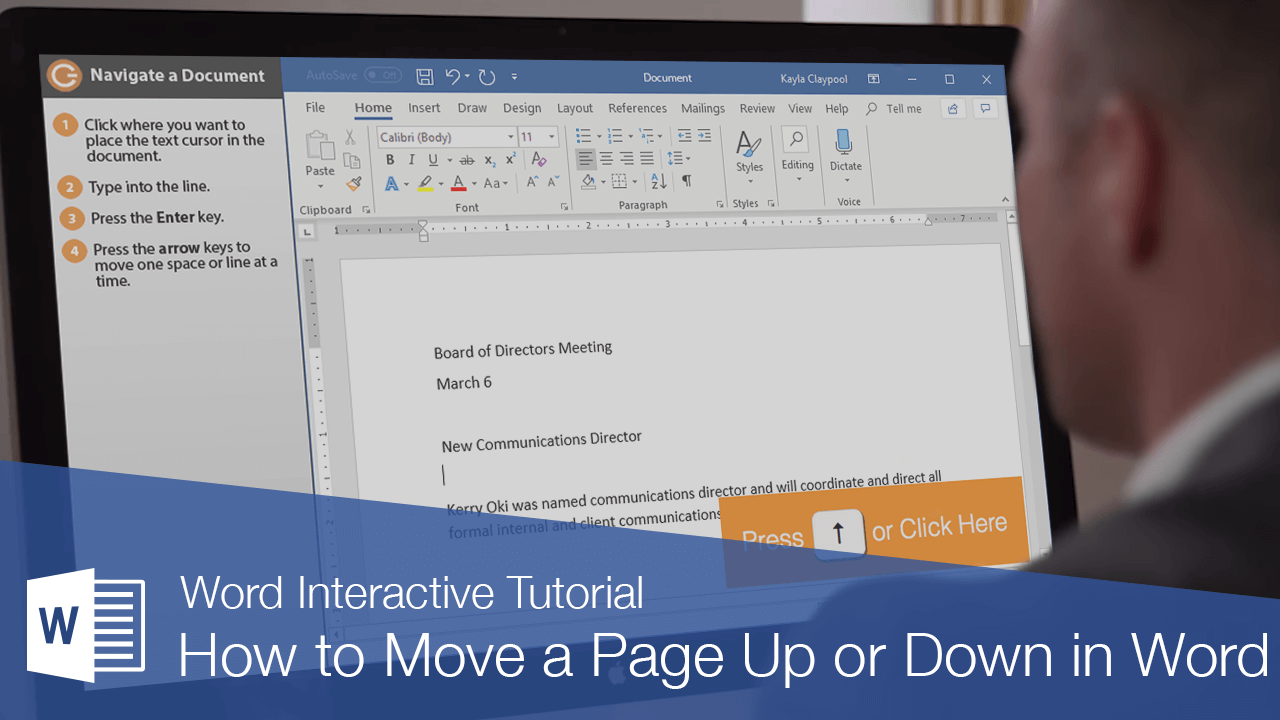
While working on a document, you’ll often need to move the text cursor around to change where you’re typing.
Move the Insertion Point
The insertion point is the blinking vertical bar that represents where text will be inserted as you type.
- Click anywhere inside the document.
The insertion point moves to where you clicked—or, at least, as close as possible. If you click in a margin, or after the end of the text toward the bottom of the page, the insertion point moves to the closest point it can.
You can also move the insertion point around using the keyboard. This method is described in the table below.
| Press | To Move the Insertion Point |
|---|---|
| Arrows (↑ ↓ ← →) | Up or down one line; or left or right one character. |
| Home | To the beginning of the current line. |
| End | To the end of the current line. |
| Page Up | Up one screen, while also scrolling the page the same distance. |
| Page Down | Down one screen, while also scrolling the page the same distance. |
| Ctrl + Arrows (↑ ↓ ← →) | Up or down one paragraph; or left or right one word. |
| Ctrl + Home | To the beginning of the document. |
| Ctrl + End | To the end of the document. |
Scroll in a Document
When a document gets long enough, it can be tough to navigate through the whole thing with just the keyboard. You can use the scroll bars on the right and bottom sides of the window to move through the document quickly.
- Click the arrow buttons at the top, bottom, and sides of the scroll bar to scroll one line at a time.
- Click and drag a scroll bar to move quickly though a document, releasing it when you’ve reached the page you want.
Use the Navigation Pane
If you have a longer document with multiple pages, or you’ve set up your document into sections with headings, you can use the Navigation Pane to move quickly through sections and pages.
- Click the View tab on the ribbon.
- Select the Navigation Pane checkbox in the Show group.
The Navigation Pane appears on the left side of the screen, showing headings used in the document. Clicking one will jump to that heading.
- Click Pages.
The Navigation Pane now shows every page in the document, represented by a thumbnail.
- Click a page in the Navigation Pane.
Word navigates right to the selected page.
FREE Quick Reference
Click to Download
Free to distribute with our compliments; we hope you will consider our paid training.



